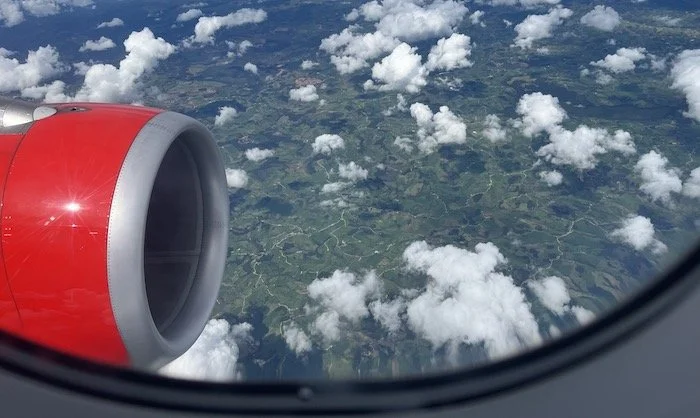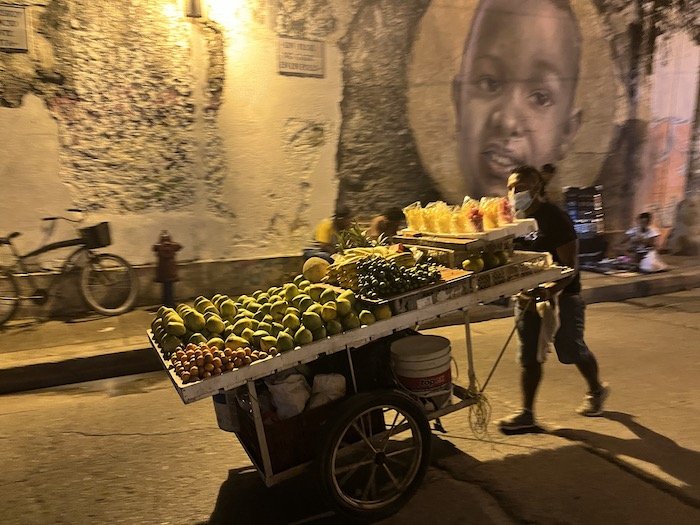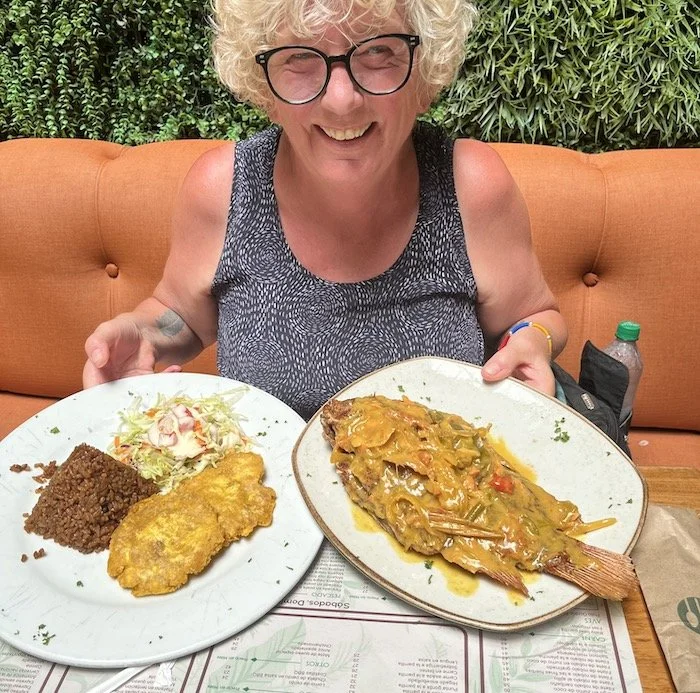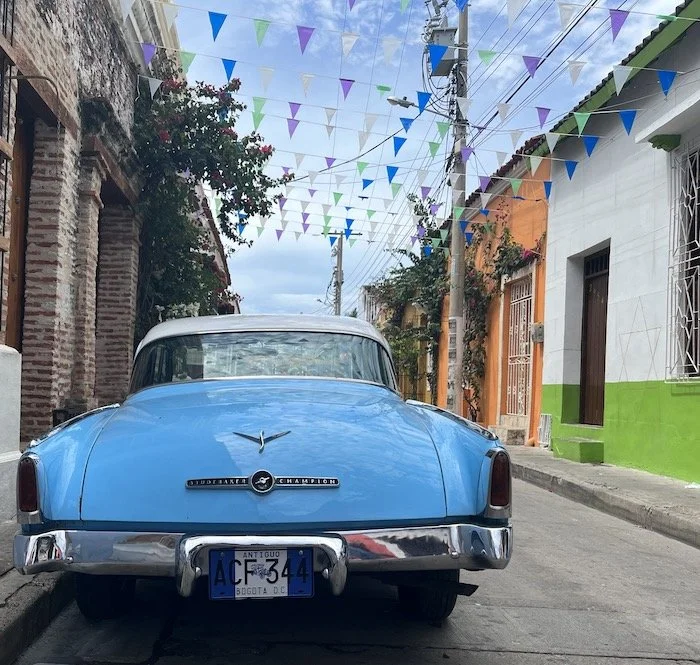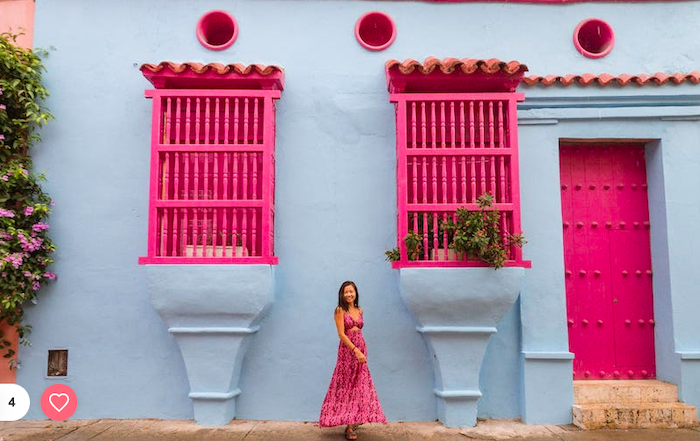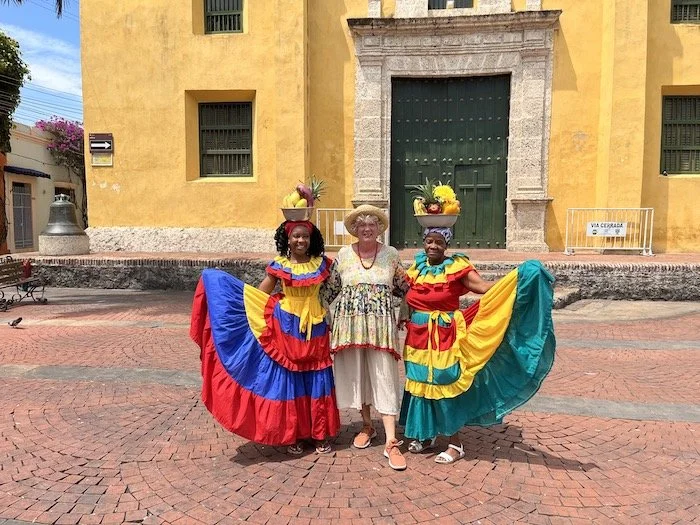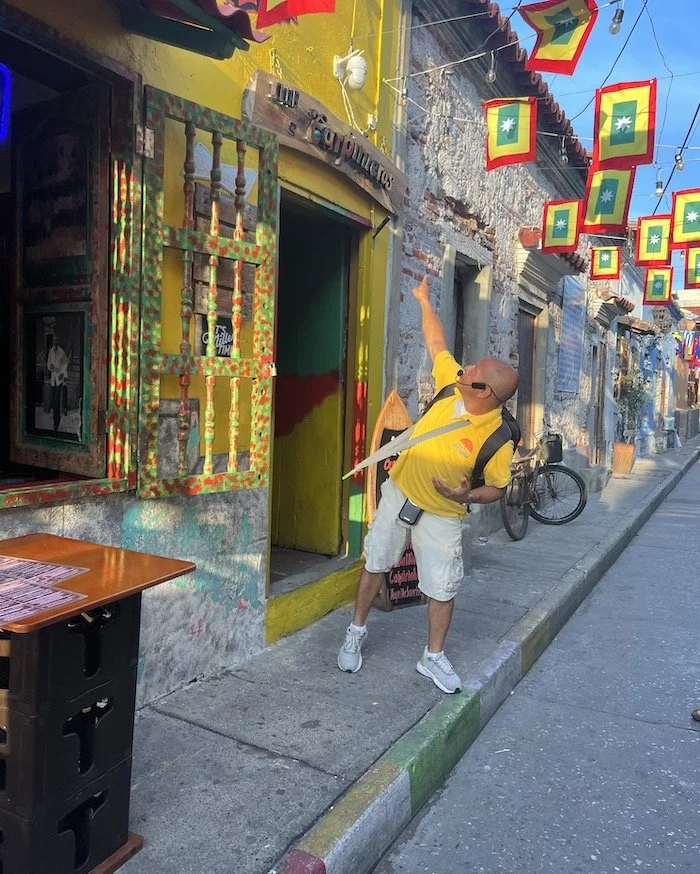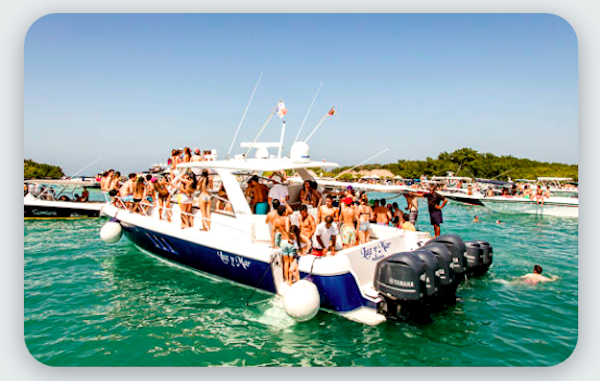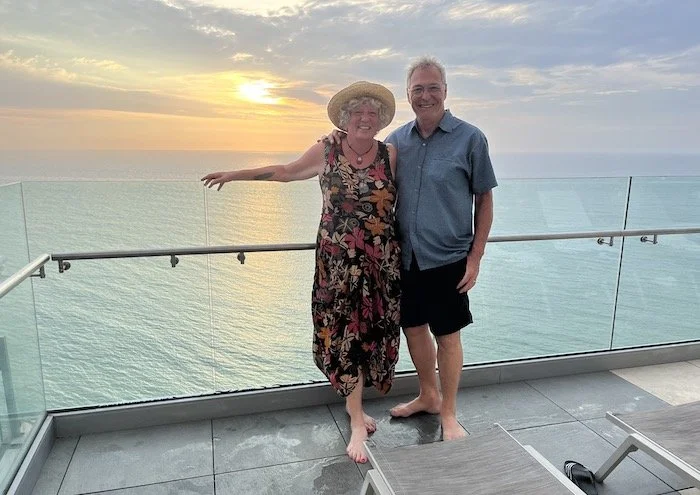For the entire time we’ve been Senior Nomads there's been an unspoken rule that I get the window seat no matter the mode of transportation. On occasion, I’ll offer it to Michael, but we’ve been married long enough that he knows it’s better to thank me profusely and pass.
So when we boarded our flight from San Jose, Costa Rica to Cartagena, Colombia we headed to Row 27 Seats A & B. A is always the window seat. But for the first time ever, in what must be over a hundred flights, there was no window. Not even two windows split between the row in front and behind. It was a wall! I actually felt a little panicked. Fortunately, the flight to Panama City was just over an hour and then we would change planes to Cartagena. We were on the same type of aircraft with the exact same row and seat numbers - 27 A & B.
The connection time between flights was short and our next flight left from a different terminal, so we practically ran to the gate. I rushed to the desk waving my boarding pass and blathering about how I could not possibly sit in a row without a window! I’m not sure the poor gate attendant fully understood my hysterics, but he quickly moved me to the emergency exit row. Perfect! I not only had a window - I had an escape hatch! Meanwhile, Michael was ten rows behind me in 27 A with a window! Same model. Different configuration. And a nice treat for Mr. Campbell.
Our Cartagena Airbnb host was at the airport to greet us, and despite the language barrier, we showed our mutual appreciation. We were staying in the Getsemani neighborhood - a warren of colorful houses and shops that has become the touristic center of Cartagena. He delivered us to our gated front door one minute ahead of a rainy-season downpour! We literally tossed our bags from the trunk onto the front porch and waved him off before we all got drenched. (video of the deluge below)
It would have been helpful to have him show us how things worked in our little bungalow, but we were happy to be inside and dry. We found two cold beers in the fridge (always a nice touch) so we just plopped on the couch to “chill” while we took in our new surroundings.
That didn’t take long since our Airbnb was very “authentic”. In this case, that meant it was small and not updated with the latest anything other than AC and a TV in the bedroom. It was a bit dark, there was no running hot water, the kitchen was rudimentary and the furniture was uncomfortable. That’s not the fault of the host (well maybe the furniture) or the home itself because it represents a typical home in Getsemani. And to be fair, we picked this place for all the right reasons. Enticing photos, a great price, the location, and thirty-six 4.97 star reviews. Luckily, we were on one of the best streets in the neighborhood. So we got exactly what we signed up for - but I think we’re done with “authentic” for now.
Our first adventure was grocery shopping. Getsemani is not a part of town with large retail establishments. However, we did find a sort of mid-sized “supermarket” that had basics but we would be buying our fresh food from street vendors or the neighborhood tiendas. And that was fine. We found plenty of delicious fruits and vegetables, and with our small kitchen, we wouldn't be cooking many meals anyway. And unlike Costa Rica, eating out was very affordable and the food was much more interesting.
Fresh vegetables, fruit, and juices were available day and night. The vendors would go up and down the streets ringing bells and calling out their offerings. In the early morning, women with baskets filled with eggs and arapas (corn hotcakes) would do the same in their beautiful sing-song voices.
I had to laugh when my “light fish lunch” arrived. It was messy, delicious and cost about $10 with a drink.
The colorful houses in Getsemani are packed as tight as a box of Crayons. Each one is painted a vibrant color and often has vines of orchids and hibiscus winding along the railings. There are whimsical door knockers, and oftentimes, exuberant street art bleeds onto the front stoop. Almost every street had some kind of eye candy. Sometimes it was a mural, but most often, flags, umbrellas, or other bright bobbles were strung overhead. Our street was festooned with pastel kites.
Because of all the colorful backdrops, Getsemani is an Instagram paradise. We know that, because we often stopped in our tracks to avoid photobombing someone’s carefully set up selfie or a photo session with a hired photographer (a very popular Airbnb Experience).
I couldn’t resist my own photo op with the Fruit Ladies. There were everywhere - apparently this popular tourist activity started when cruise ships first arrived in Cartagena. Vendors tried selling fruit to tourists as snacks - but all they wanted was a photo with them. So now the fruit is purely decoration and the real money in in the tips.
At the end our street sat Plaza Trinidad, the neighborhood gathering place. There wasn’t much activity during the muggy afternoons, but at dusk it comes to life with interesting food carts, live music street entertainment. And plenty of "cervesas frias" were had by tourists and locals alike.
We were fascinated by the food being prepared by the vendors. At one stall there were great piles of chopped meat (pork?) onions, and peppers set to one side. Portions the size of a soccer ball were pulled onto a grill and sizzled to order, doused with several sauces, topped with gooey melting cheese, and then piled on soft corn Arapos. Another setup specialized in foot-long hot dogs, also grilled, sauced, tossed in a bun, and topped with a slathering of mayo and frizzled onions. Other carts serving hamburgers, empanadas, smoothies, and fresh fruity cocktails rounded out the offerings.
The Old Town was also a jumble of colorful buildings centered around beautiful parks and churches. You could walk the stone walls around most of the city - these walls were at the other end of our street.
We took two walking tours of the city. The first one started in the Old Town inside the fortress walls. We learned the complicated history of this valuable trading hub. Cartagena de Indias (its formal name) gained fame in the mid-16th century when great fleets stopped annually to take on gold and other products of northern South America to be ferried to Spain. The city became a center for the Inquisition and (unfortunately) a major slave market.
The second tour was in our own quirky neighborhood. For this event, we met in a nearby park that bordered Getsemani on one side and the Old Town on the other. As we got underway, the first thing our guide pointed out were sloths in two of the trees, some chattering monkeys, and several very large iguanas munching on a lunch of lettuce heads, carrots and apples. Wait. We just spend many hours and hundreds of dollars seeking these same animals in the wild in Costa Rica. And here they are treated like house pets?
Color, color everywhere! The quality of the street art packed in Getsemani was beyond photoworthy!
Our tour guide was born and grew up in Getsami and he was quite a character. He told great stories, but he also noted the charm of Getsemani’s colorful streets hides a darker side of the tourist boom. The now colorful houses and beautiful murals came after the tourists started arriving - and houses were snapped up to become short-term rentals and restaurants. and the “real” residents either have moved away or live at the margins. He took us by his modest house where he lives with three of his brothers and their wives. A house across the street just sold for a fortune, but now that family will not be able to live anywhere near where they’ve spent their whole lives. I think that is a universal truth right now.
The weather in Cartagena is notorious for being hot and humid. We knew it would be, but knowing it and feeling it were two different things. We moved as slowly as the sloths in the park but we were still dripping with sweat most of the time. Ugh. It was time to go to the beach. But the beaches near the city aren’t very nice. If you really wanted a “Caribbean” beach experience, you needed to book a trip to a private beach club or resort on one of the nearby islands, or rent a car and drive at least an hour down the coast.
Nothing about boarding a crowded party boat for an all-day excursion appealed to us. We also didn’t want to rent a car, and the taxi fare to the nicest beach was definitely over budget. Then I recalled in Puerto Vallarta that some hotels and resorts offered day passes to use the pool and hotel beachfront. Bingo!
We found the perfect solution at the Hyatt Regency Boca Grande, just about a mile from our Airbnb. For $80 we could spend the entire day lounging near two beautiful infinity pools, enjoy a complimentary welcome drink, and a tuck into a delicious three-course lunch. The views over the ocean and back to the old town were pretty sweet as well.
It was the perfect anecdote to the heat. The next morning we woke up to a planned power outage in our neighborhood. After about ten minutes of no fans and no air-conditioning, we grabbed our stuff and beelined straight to the hotel for a second, equally delightful afternoon.
We enjoyed our week in Cartagena, but that was enough time to experience this exuberant tourist town. We were ready for a culture change. And with our next stop in notorious Medellin, we'd get a definite change in elevation and weather, too.
Thanks for following along,
Debbie and Michael Campbell
p.s. If you are a nomad now or dreaming of full-time travel join our Senior Nomads Facebook Group
